Monday
Featured StoriesThe Drala of Center Design
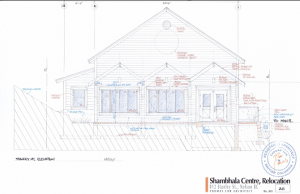 COLUMN: Shambhala on the Move A series about Shambhala Centers and Groups who are moving into new spaces or renovating their existing homes. The Outer, Inner and Secret Levels of Shambhala Center Design by Russell Rodgers Recently, the Kootenay Shambhala Center in Nelson, British Columbia, purchased a building. Because we had to acquire the services of a non sangha architect for the renovations, it seemed like a good idea to summarize in plain language some of the basic elements of how a Shambhala Center functions and how it is designed. In Shambhala design, one has three levels of manifestation. Ideally, these are reflected in the spatial organization of the building. For a more complete description, see Shambhala Environments. To put it briefly, here are some main points:
COLUMN: Shambhala on the Move A series about Shambhala Centers and Groups who are moving into new spaces or renovating their existing homes. The Outer, Inner and Secret Levels of Shambhala Center Design by Russell Rodgers Recently, the Kootenay Shambhala Center in Nelson, British Columbia, purchased a building. Because we had to acquire the services of a non sangha architect for the renovations, it seemed like a good idea to summarize in plain language some of the basic elements of how a Shambhala Center functions and how it is designed. In Shambhala design, one has three levels of manifestation. Ideally, these are reflected in the spatial organization of the building. For a more complete description, see Shambhala Environments. To put it briefly, here are some main points:
1. There is an outer level that is reflected in what one can perceive directly with the senses. Anyone can see this: so these parts of the building are the most public, the most obvious, and the most universally accessible. The entry, community room, children’s room and kitchen operate on this level.
2. There is an inner level that reflects energy and felt atmosphere. This level is felt individually by each person, and it’s meaning has to be personally experienced. What an individual feels is not obvious to others, because it is an inner experience. This level is what is being worked on in the main shrine room. People might feel a sense of spaciousness and presence in the room, but they would mostly be concerned with thoughts and perceptions that occur within that spaciousness. Spatially, it would be near the community room, but need to be somewhat protected from its sound and activity.
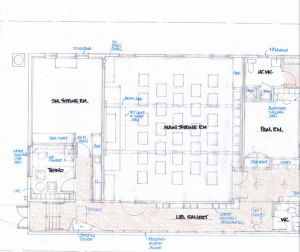 3. There is a secret level that reflects ultimate understanding. Like the inner level, it is not obvious to others – but here it is even less obvious. It refers to the most basic level of mind, the spacious emptiness that cannot be described with words, but which has the power and potential to manifest as thoughts, emotions and perceptions. Here we are dealing with the spacious mind itself, beyond the obvious individual occurrences. Access to this level is transmitted by realized persons in the lineage. Subsequent to that transmission, the vajrayana practices bring the practitioner towards fruition. The Sakyong’s room and the vajrayana shrine room would be in parts of the building that are the least accessible, reflecting the fact that it would be a mistake to try to interpret this level with conventional words and thinking. At the same time, it reflects the ultimate importance of the secret mandala. It’s not that the public is cut off from the inner and secret parts of the building, but there’s a sense that preparation is required both to experience it properly and to understand what one has experienced. If these areas are not somewhat protected, their meaning will get lost in the shuffle.
3. There is a secret level that reflects ultimate understanding. Like the inner level, it is not obvious to others – but here it is even less obvious. It refers to the most basic level of mind, the spacious emptiness that cannot be described with words, but which has the power and potential to manifest as thoughts, emotions and perceptions. Here we are dealing with the spacious mind itself, beyond the obvious individual occurrences. Access to this level is transmitted by realized persons in the lineage. Subsequent to that transmission, the vajrayana practices bring the practitioner towards fruition. The Sakyong’s room and the vajrayana shrine room would be in parts of the building that are the least accessible, reflecting the fact that it would be a mistake to try to interpret this level with conventional words and thinking. At the same time, it reflects the ultimate importance of the secret mandala. It’s not that the public is cut off from the inner and secret parts of the building, but there’s a sense that preparation is required both to experience it properly and to understand what one has experienced. If these areas are not somewhat protected, their meaning will get lost in the shuffle.
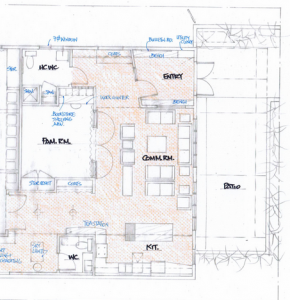 As an example of the three levels, we could look at an ikebana arrangement. On the outer level, anyone can see the flowers. On the next level, there is the spaciousness, energy and beauty of the arrangement. Each person experiences this in private on an inner level. On a secret level, there is the spacious and powerful nature of the mind itself. This level is the ultimate nature of the images and the mind that manifests those images. All the different levels, within and without the building, should reflect a sense of dignity, wakefulness, uplift and spaciousness. However, as one gets closer to the secret level, the décor reflects this more and more and takes on a transmission quality. Especially on the inner and secret levels, the sense of presence that one might experience is called drala. Drala means “above the enemy”. In this case, it might mean that one’s habitual self-talk just stops and one has a sense of just being there, tuned in, open. Dralas are attracted whenever people care for their environment and have a sense of sacredness towards it. Landforms, well-kept gardens, and ikebana arrangements attract drala.
As an example of the three levels, we could look at an ikebana arrangement. On the outer level, anyone can see the flowers. On the next level, there is the spaciousness, energy and beauty of the arrangement. Each person experiences this in private on an inner level. On a secret level, there is the spacious and powerful nature of the mind itself. This level is the ultimate nature of the images and the mind that manifests those images. All the different levels, within and without the building, should reflect a sense of dignity, wakefulness, uplift and spaciousness. However, as one gets closer to the secret level, the décor reflects this more and more and takes on a transmission quality. Especially on the inner and secret levels, the sense of presence that one might experience is called drala. Drala means “above the enemy”. In this case, it might mean that one’s habitual self-talk just stops and one has a sense of just being there, tuned in, open. Dralas are attracted whenever people care for their environment and have a sense of sacredness towards it. Landforms, well-kept gardens, and ikebana arrangements attract drala.
Dralas can be viewed as not separate from one’s mind, or as atmospheric presences that come and stay in the space even when one is not there. Shambhala centres work with attracting drala using banners, flower arrangements, artwork, shrines, and carefully chosen colors on the walls. Ideally, the presentation of the signage and the exterior of the building should communicate a sense of wakefulness and attitude of profound respect for the materials that are used. When people practice wakefulness for a long time in a space, the space takes on a particular quality that is palpable, even to newcomers, as a sense of peace and lack of struggle. On the one hand, the dralas that gather where we practice can be driven away by sloppiness and lack of respect. On the other hand, if one has an attitude of sacredness and respect towards the environment, the dralas will gather and stay.
~~ This series is about Shambhala Centers and Groups who are moving into new spaces or renovating their existing homes. If you have a story to share, please contact Candlin Dobbs who is the host for this Shambhala Times column. If you are looking for more information, there is a wealth on the Shambhala Environments website: www.shambhalaenvironments.com

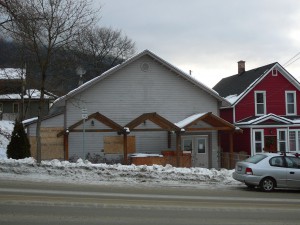
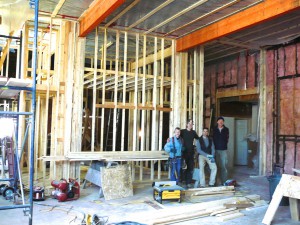




Jan 21, 2014
Reply
Thank you for sharing this. It is most helpful in understanding the energies of our space.
Jan 20, 2014
Reply
How exciting! I can’t wait to see the new Nelson Shambhala Centre the next time I visit. The designs look amazing. Congratulations.
Jan 18, 2014
Reply
Fascinating — thank you for sharing this view!